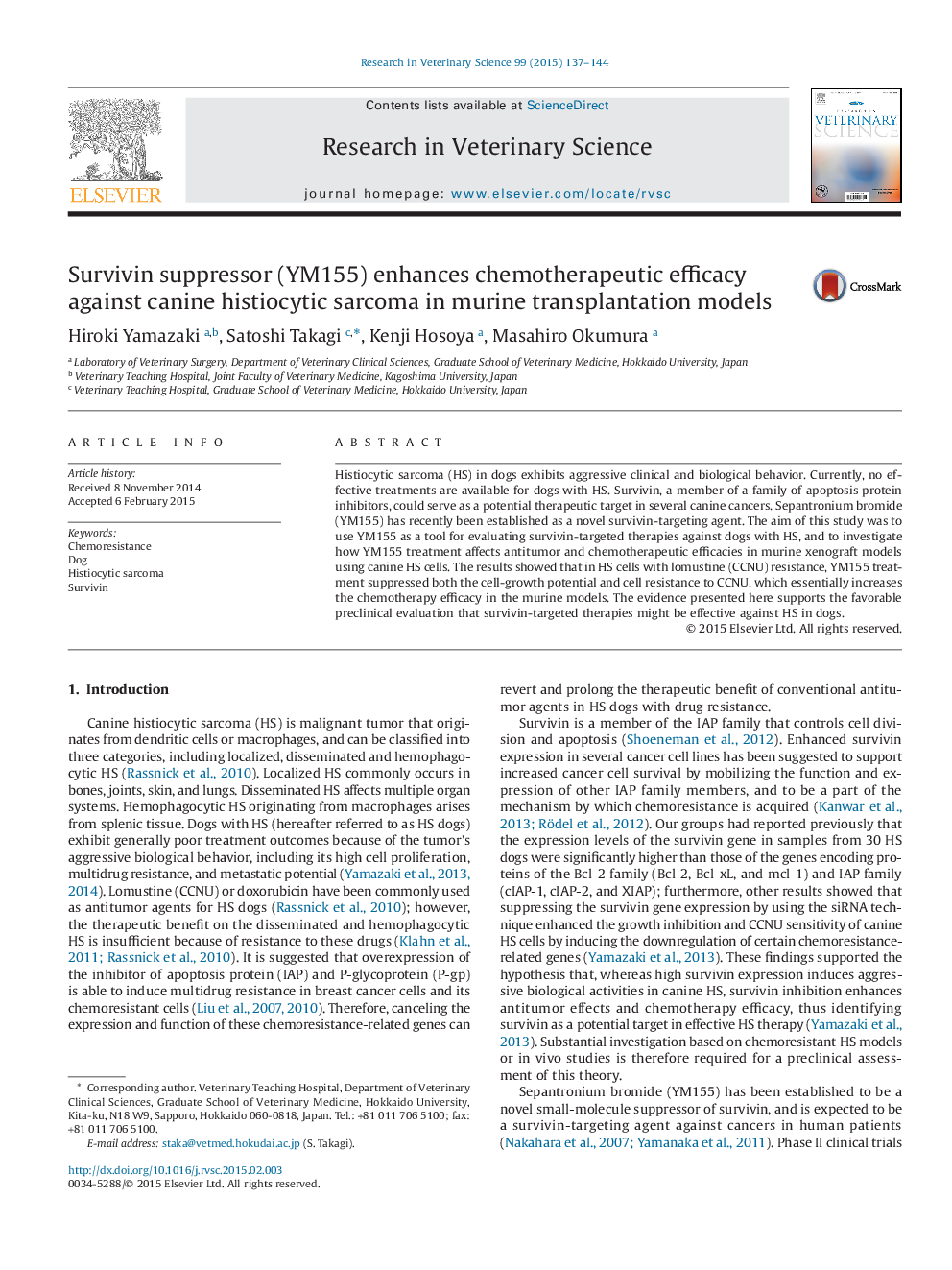| Article ID | Journal | Published Year | Pages | File Type |
|---|---|---|---|---|
| 2454873 | Research in Veterinary Science | 2015 | 8 Pages |
•We investigated effects of survivin inhibitor (YM155) in histiocytic sarcoma (HS).•YM155 inhibited cell-growth potential against lomustine-resistant canine HS cells.•YM155 decreased chemoresistance against lomustine-resistant canine HS cells.•YM155 enhanced anti-tumor and chemotherapy efficacy in murine HS models.
Histiocytic sarcoma (HS) in dogs exhibits aggressive clinical and biological behavior. Currently, no effective treatments are available for dogs with HS. Survivin, a member of a family of apoptosis protein inhibitors, could serve as a potential therapeutic target in several canine cancers. Sepantronium bromide (YM155) has recently been established as a novel survivin-targeting agent. The aim of this study was to use YM155 as a tool for evaluating survivin-targeted therapies against dogs with HS, and to investigate how YM155 treatment affects antitumor and chemotherapeutic efficacies in murine xenograft models using canine HS cells. The results showed that in HS cells with lomustine (CCNU) resistance, YM155 treatment suppressed both the cell-growth potential and cell resistance to CCNU, which essentially increases the chemotherapy efficacy in the murine models. The evidence presented here supports the favorable preclinical evaluation that survivin-targeted therapies might be effective against HS in dogs.
